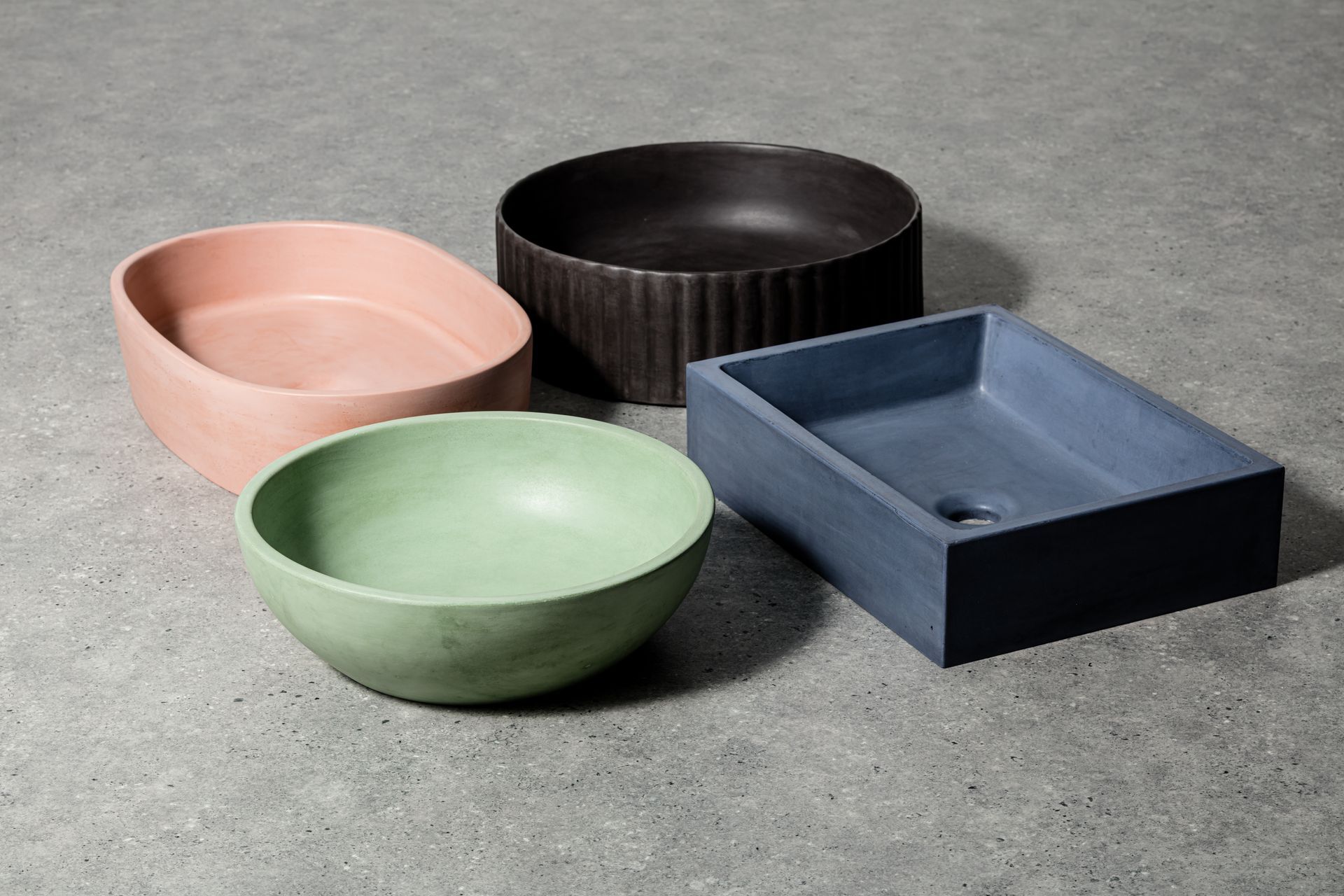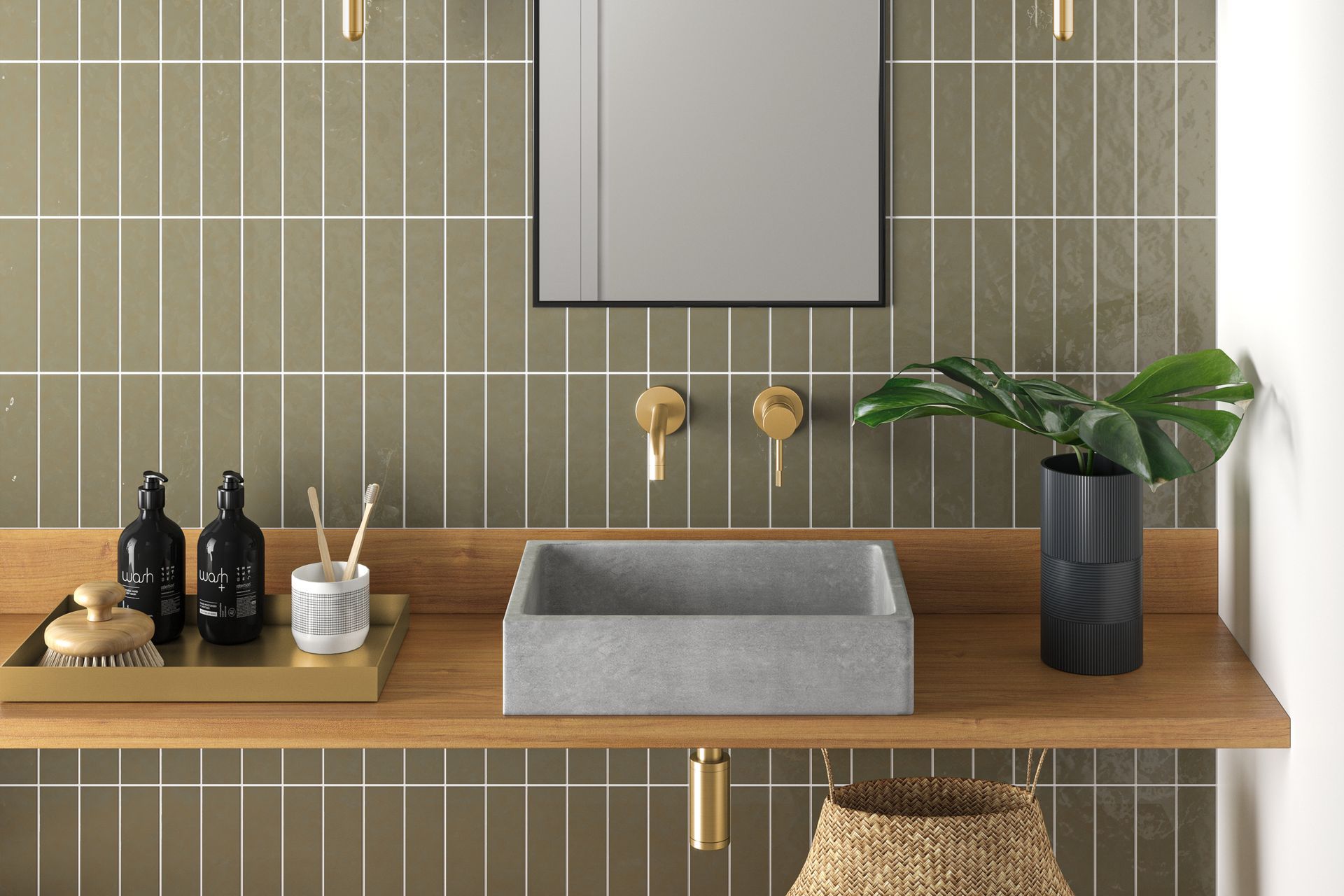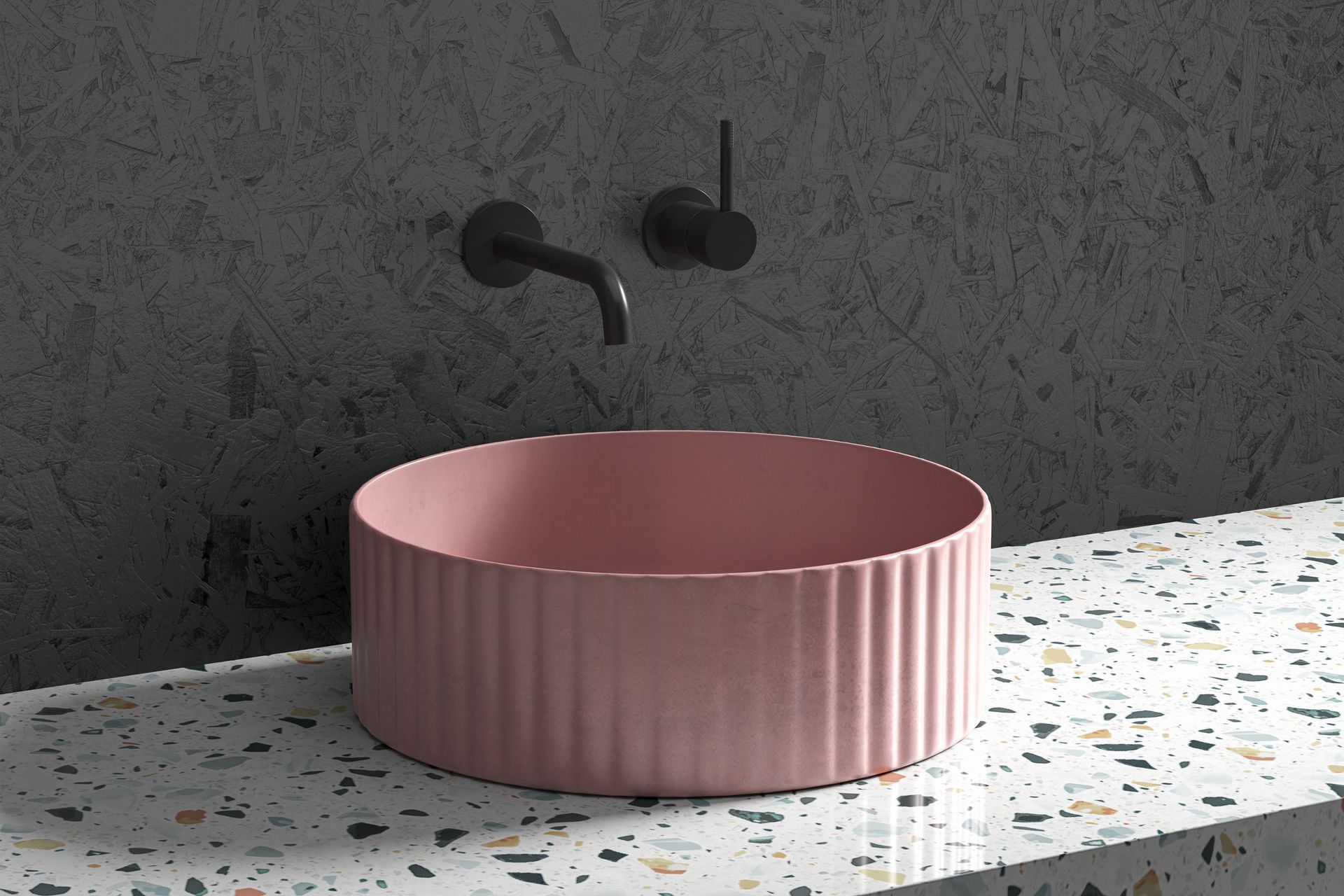Coloured concrete: How to bring your bathroom to the next level
Written by
04 February 2022
•
5 min read

After a sustained period of minimalism in interiors, throughout the last few years colour has made its resurgence, creeping its way back into our homes — and bathrooms are perhaps the clearest evidence of this trend.
Where once walls were white, tiles were neutral and fittings were bland, now eye-catching hues are making themselves known throughout bathrooms — not just in wall and floor coverings, but also in fittings and sanitaryware.
Bathroom sinks and counters are an especially trendy element through which to introduce colour, away from the traditional route of tiles and paint. New Zealand-based company Robertson Bathware has known this for a while, and has stepped up to meet the demand.

Flirting with colour
Introduced to the market in 2019 under the brand ELEMENTI, the new BARE range features coloured concrete benchtops and the basins upon them, targeted at the niche market for more natural, stone-look bathroom fittings that will stand the test of time.
Robertson general manager James Robertson says the range’s combination of colour and appealing materiality is what makes it stand out.
“It adds the colour, the texture, and the organic sort of feel that a lot of the architects and designers are looking for these days,” says James.
Having been in the business of bathware for almost 35 years, James has witnessed the back and forth of colour trends throughout that time. At the beginning, colours were common: blues, almond ivories, and greys were popular. But then the minimalist wave came, he says — white porcelain basins and chrome tapware became the norm.
Then it began to change.
“In the last five or so years, we’ve seen colour come through for basins and benchtops,” he says. “It’s gone from across-the-board matte white or matte black to pastel colours — greens, pinks, blues. Four or five different shades of the greys are just hugely hugely popular at the moment too.”
It’s not just the pastels and greys on offer, though: the BARE range is available in any Resene colour, and custom colours are available on request. The sheer range of potential colours gives architects, designers and owners more scope to overhaul bathrooms, and gives them the ability to put their own signature twist on the space.

Concrete craze
Of course it’s not just the colours that make Robertson Bathware’s products versatile — it’s the concrete too.
The materiality of BARE’s basins and benchtops offer the ability to manufacture the products in almost every shape and size while using an organic material. But concrete, by nature, is a porous substance, so when developing the range Robertson Bathware needed to come up with a solution.
“The trick is trying to make the concrete in a way that it's in good quality,” says James. “In its natural state, concrete is porous and liable to crack, and is not that great with heat. It took quite a long time to come up with different formulas of concrete that are good for the bathroom.”
Eventually, a solution arrived. “For basins and the vanity tops, we use Glass Fibre reinforced concrete,” says James. “It has bits of fibreglass mixed into concrete, holding it together and making it more pliable when you're making the moulds.”
The introduction of Glass Fibre reinforced concrete gave the team the ability to experiment with a plethora of different mould shapes and sizes, while also lending strength to the final product — ensuring its durability and protecting it from thermal shock or damage from heavy objects being dropped on it.

The process
Robertson Bathware’s products are all manufactured in its Auckland facility, and uses the best-quality concrete products to ensure longevity.
Its basins use a highly engineered ECC concrete, which needs extra care to remain durable, before glass reinforcing takes place. This base concrete is more dense and has fewer air bubbles than standard concrete — hallmarks that improve the product’s thermal shock threshold and its waterproof properties.
Aside from the materials, the moulds used in forming the basins are crucial.
“We spent almost two years coming up with moulds of what we thought were popular designs,” says James.
Once the concrete mixture is ready, a meticulous, 45 minute mixing process occurs, whereby the mixture gets denser and the fibres gel together. Then, it’s poured into the house-made mould, where it’s left for two days to set.
“After that, we go through a process of waterproofing the basins with our concrete sealer,” says James. “Finally, we use our concrete wax to give it a showroom lustre. And then the basin is left in the drying room for a week, after which we ship it to our customers.”

Embracing change
Like any new trend, James says, the widespread uptake will probably be gradual, and coloured concrete basins and benchtops are currently in a niche end of the market.
“It may not be for everyone,” he says. “But people who like an additional splash of colour and texture — it’s something that they’ll absolutely love, especially knowing that it’s handmade specifically for them.”
It’s a move away from the all-white, precise look that has endured for the past decade or so.
“We like to say it’s perfectly imperfect.”
Learn more about Robertson Bathware and this range.